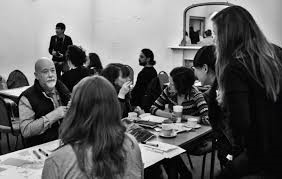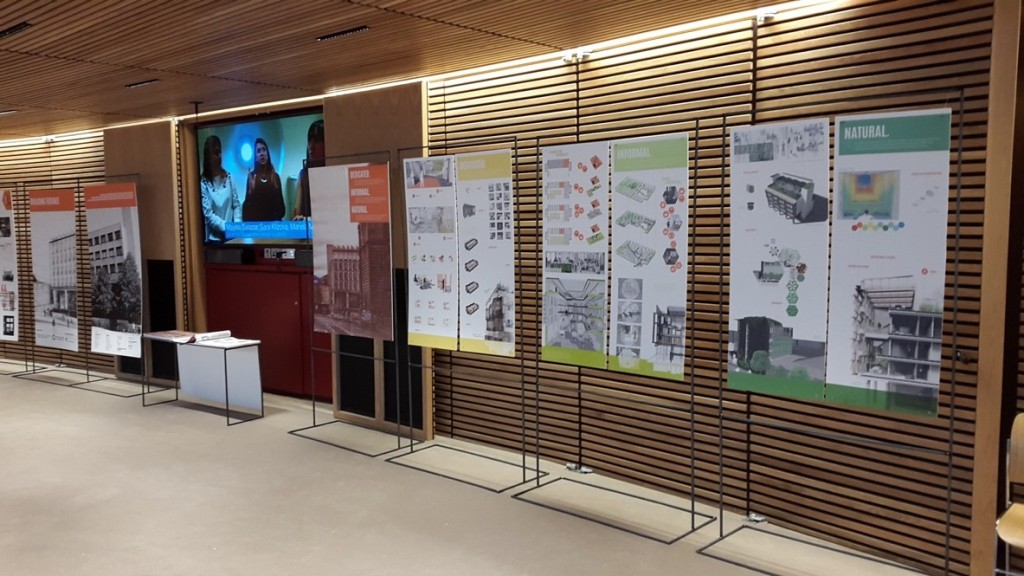
The Department for Social Responsibility and Sustainability (SRS) is curating a mini-series of blog posts on learning, teaching and sustainability for Teaching Matters. The mini-series hopes to capture a breadth of activities happening across campuses, to inspire staff and students to participate and expand on current offerings.
The mini-series starts off with a profile of the Semester 2 Advanced Sustainable Design community project, written by Dr Elizabeth Vander Meer, Climate Policy Manager…
Every year, students on the MSc Advanced Sustainable Design, run by John Brennan in the Edinburgh School of Architecture and Landscape Architecture, create exciting visions for sustainability as part of their semester 1 and 2 projects. The course is firmly embedded in a tangible place and contexts, encouraging students to start defining their own investigative agendas. In previous years (2014-2016), students set their talents to reimagine Galashiels to 2040. This was a community engagement project called Resilient Borders, which focused on cultural, ecological and socio-economic particulars of the location.

Last year, students turned their vision to a campus building, redesigning 7 Bristo Square for future learning, climate (adaptation) and sustainability to 2030 in a project called Building Futures. Final student designs were exhibited as part of the international Planetary Health Conference held in McEwan Hall, gaining an audience of 400 delegates.

Both projects provided tangible possibilities to stakeholder groups, informing future development directions.
The living lab project for this year in Semester 2 focuses on the Union Canal, from Lochrin Basin to the city bypass. The course assembles 14 students from around the world with different professional backgrounds, a majority of them in the field of architecture. The design project brings together strands woven in semester 1 in a comprehensive and sustained study. With support from SRS, the students will engage with the Fountainbridge Canalside Initiative (FCI) community group and other groups with an interest in the Union Canal. The project builds on the hard work and sustained efforts of such groups in collaboration with Edinburgh City Council and developers to conserve, promote and regenerate in, along and around the Union Canal.
As a starting point, the project references the redevelopment taking place in Fountainbridge at two brownfield sites, India Quay and an adjacent plot, which have stood empty for years after the demolition of a brewery complex.

But the focus of the student project work will be along the entire length of the canal within Edinburgh city limits. Students will be guided to think of the canal as an infrastructure artery not in the sense of literal flows of power, water and communication but more as frameworks for knowledge and mutual support to address social and economic dimensions of sustainable development. At the same time the role of water as a medium that underpins ecological systems will be used as a means to regenerate the natural world as well promoting social and economic well-being.
Objectives for students in semester 2 include:
- Understanding the canal at a city scale; how it makes its presence felt in the city, its ecological potential, how it works as a traffic route and its potential for tourism, interpretation, business, community and home.
- Understanding the waterway at the scale of building; finding and understanding potential in a site, then realising that potential as a development programme and defining tangible outputs for that programme.
- Developing outputs in collaboration with community groups to provide possible future directions for the Canal area.
The project can only be realised through close engagement with community groups, similar to the Galashiels project. A series of events will be held to orient students to the perspectives of community groups and organisations with an interest in the canal’s development. These stakeholders will act as clients to the students, assisting students in honing in on particular sites along the canal. These detailed outputs provide a means of prioritising and briefing to produce a vision for the canal based on stakeholders asks. SRS and community groups are keen to see the inspiring final student designs that result from this exciting living lab project.
Read more about the pedagogical approach of ‘The Living Lab’ at University of Edinburgh here.


What a fascinating project this is. Thanks for sharing it with Teaching Matters, as I had no idea this work was happening. I was curious as to whether the class limited to 14 students, or do you sometimes have more students on the course than that? I understand the nature of the work might limit how many students you can have involved.
Thanks very much for your comment! I’ve been very excited and grateful to be able to support John Brennan, the course director. John considers 15-16 students optimal. Each year he receives up to 120 applications and 12 to 14 students are then chosen. The highest number on the course previously has been 18 students about 8 or so years ago.